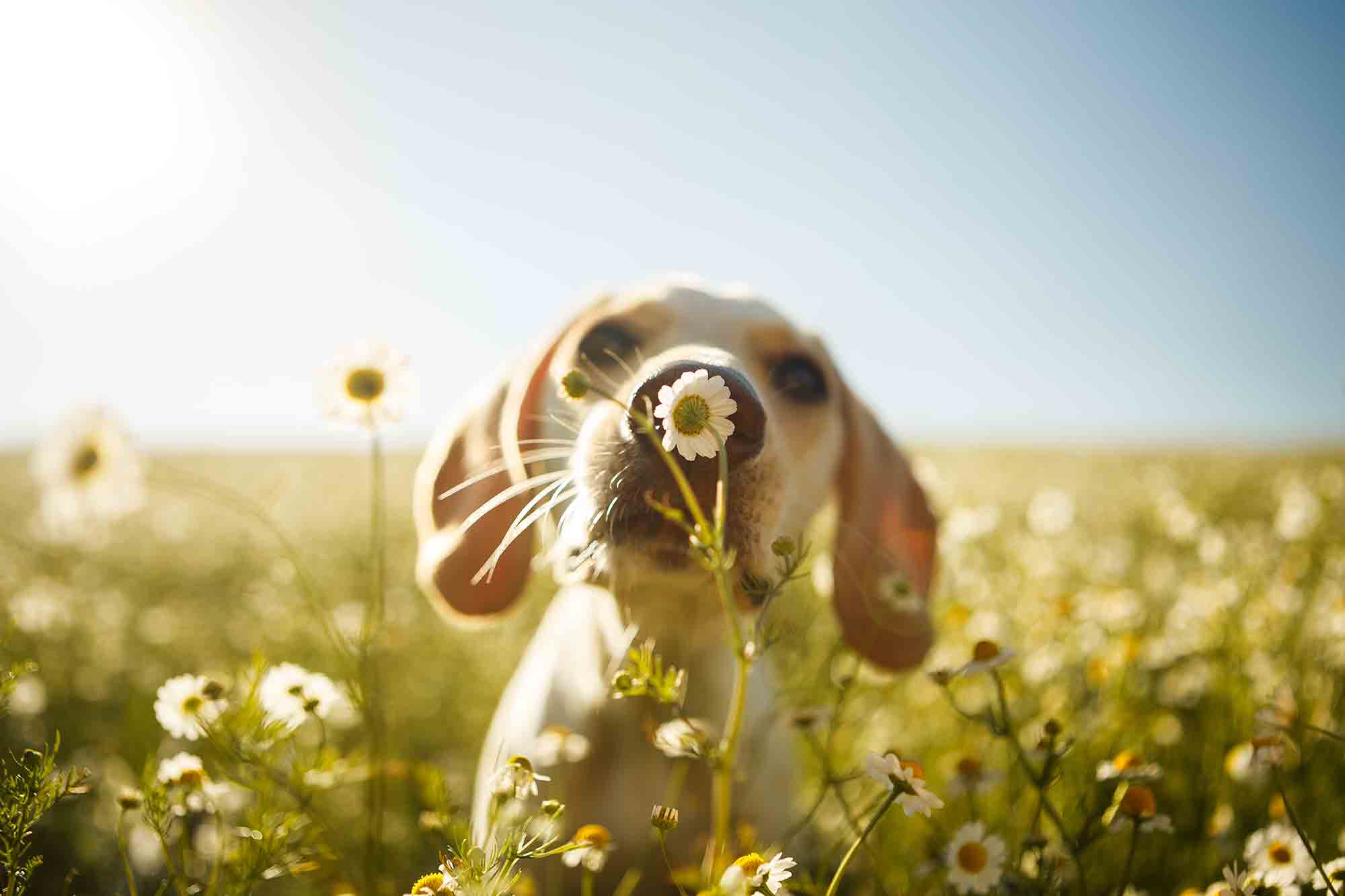All Your Eggs in One Basket: Spring Pet Safety You Can Count On
 If it seems like every season comes with its own set of pet safety precautions, it’s because, well, they do! As far as health threats, they all have things in common, but each one also has its own risks connected to certain holidays or events. Without a careful look at these specifics, spring pet safety can quickly become relegated to the back burner.
If it seems like every season comes with its own set of pet safety precautions, it’s because, well, they do! As far as health threats, they all have things in common, but each one also has its own risks connected to certain holidays or events. Without a careful look at these specifics, spring pet safety can quickly become relegated to the back burner.
Smell the Smells
Spring time means more outdoor experiences for you and your pet. As the days grow longer and warmer, pets are increasingly exposed to the following dangers:
- Parasites – Fleas, ticks, and, to some extent, mosquitoes begin to emerge in the spring. Year-round parasite prevention ensures there’s never a seasonal lapse in protection. If your pet needs a new prescription, we’re happy to help you get started (bonus tip: preventing a flea infestation inside your home sure beats the alternative!). Even with a preventive in place, be sure to check your pet’s skin and coat every day and ensure window screens are intact to keep pests outside.
- Toxic chemicals – Animals love the spring air, but it can sometimes be full of chemicals. To prevent a pet poisoning, avoid using certain lawn and garden products while your pet is outside. Allow treatments to dry completely before allowing your pet back on the grass. Store products like fertilizer, rodent bait, snail bait, pesticides, and insecticides behind closed doors.
- Dangerous plants – It’s definitely time to smell the flowers, but there are many types that are downright dangerous to pets. Oleander, azalea, tulips, daffodils, and any type of lily are among the most toxic.
- No supervision – Spring pet safety hinges on safe containment. Driven by mating and territorial instincts, pets are more likely to dart out the front door or hop the fence. Be sure to update your pet’s microchip, buy new tags, check the fencing, and bone up on training/obedience lessons. Also, spayed or neutered pets are less likely to roam.
Sphere of Influence
Spring pet safety should always address possible food risks. Dangers include:
- Chocolate
- Xylitol
- Alcohol
- Macadamia nuts
- Raisins/grapes
- Caffeine
- Onions
- Garlic
- Avocado
If you have additional questions about what your pet can and cannot have, please let us know.
Extra Spring Pet Safety Pointers
Take a moment to consider how your pet handles family gatherings, block parties, farmer’s markets, and other loud, unpredictable, crowded events. Is your pet well-trained, highly sociable, and obedient? If not, please leave your pet at home. Better yet, stay home together, and hunker down for a sweet springtime snuggle session.
We hope you’ll let us know if you have any questions or concerns regarding spring pet safety. We’re always here for you. Happy spring!
